Grassroots organizations play a crucial role in advocating for community needs by mobilizing residents to tackle local issues and influence policy. Through collective action, they foster social change, economic empowerment, and resilience within communities, creating sustainable improvements tailored to specific challenges. Supporting these organizations can amplify their impact and enhance their ability to drive meaningful change.
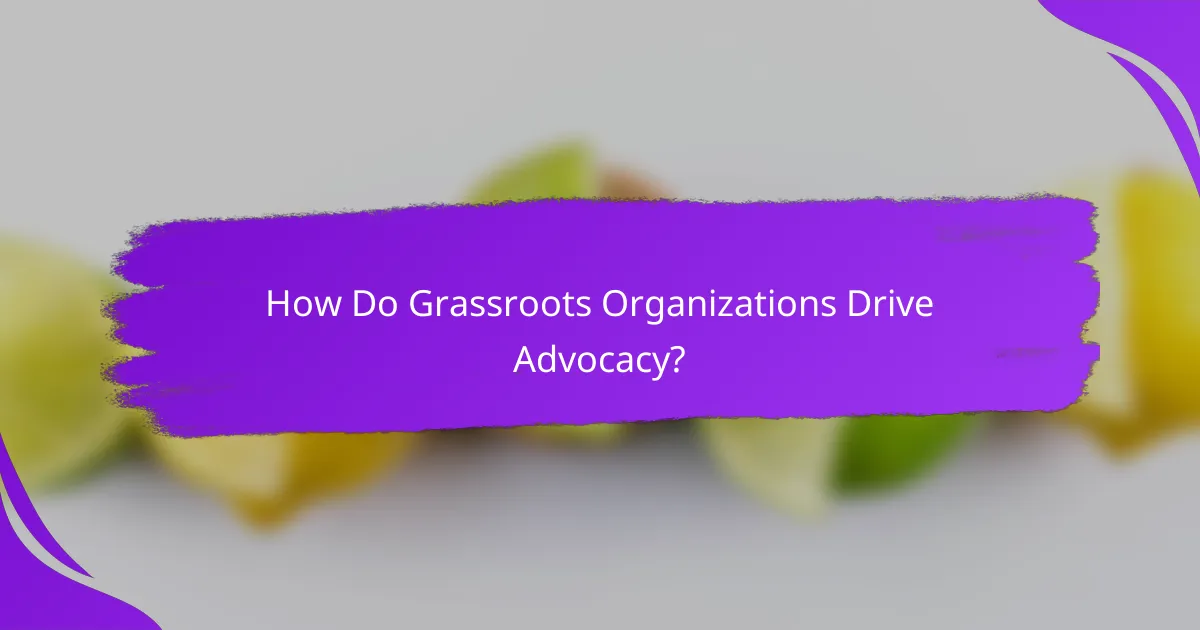
How Do Grassroots Organizations Drive Advocacy?
Grassroots organizations drive advocacy by mobilizing community members to address local issues, influencing policy decisions, and raising public awareness. They empower individuals to take action, often leading to significant social change through collective efforts.
Community mobilization
Community mobilization involves organizing individuals to participate in advocacy efforts, fostering a sense of ownership and responsibility. Grassroots organizations often host events, workshops, and meetings to engage community members and build networks of support.
Effective mobilization strategies include door-to-door outreach, social media campaigns, and partnerships with local businesses or schools. These approaches help to create a unified voice that can effectively advocate for change.
Policy influence
Grassroots organizations influence policy by advocating for specific legislative changes or initiatives that reflect community needs. They often gather data, conduct research, and present findings to policymakers to support their positions.
Engaging with local government officials and participating in public hearings are common tactics. Building relationships with decision-makers can lead to more favorable outcomes for the communities they represent.
Public awareness campaigns
Public awareness campaigns aim to educate the broader community about specific issues and mobilize support for advocacy efforts. Grassroots organizations utilize various media channels, including social media, flyers, and community events, to disseminate information.
Successful campaigns often include storytelling to connect emotionally with the audience and highlight the importance of the issue. Collaborating with local influencers or media can amplify the message and reach a wider audience.
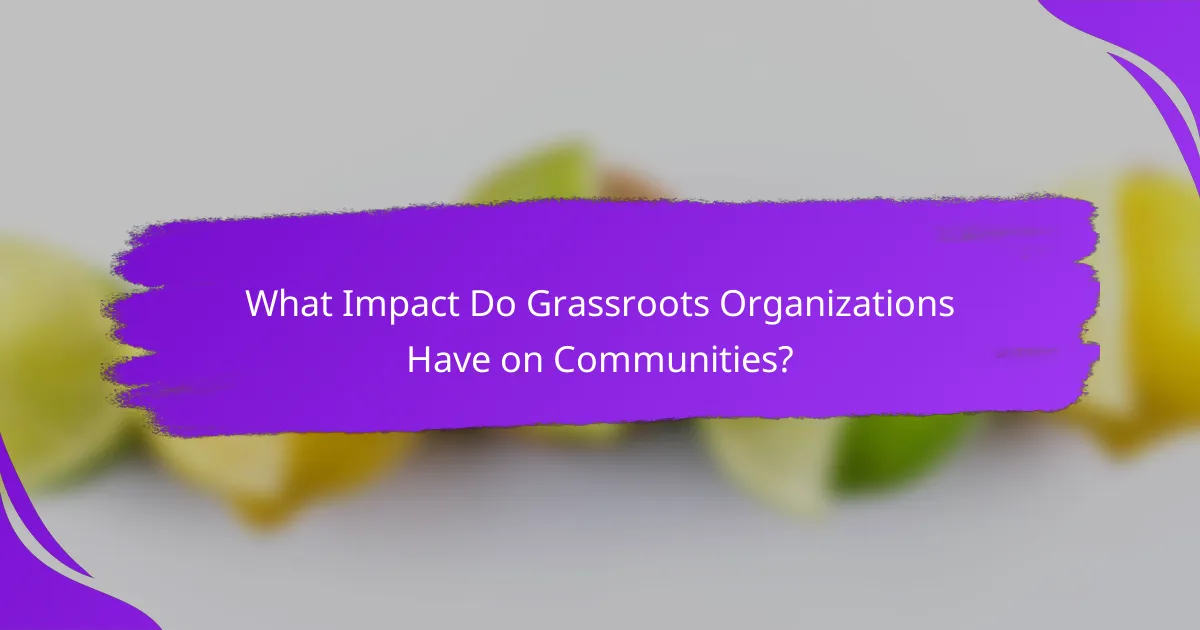
What Impact Do Grassroots Organizations Have on Communities?
Grassroots organizations significantly influence communities by driving social change, fostering economic empowerment, and enhancing community resilience. Their localized efforts often address specific needs and mobilize residents to create sustainable improvements.
Social change initiatives
Grassroots organizations often spearhead social change initiatives that tackle pressing issues such as inequality, discrimination, and environmental concerns. By mobilizing community members, they raise awareness and advocate for policy changes that reflect the needs of the population.
For example, a grassroots group may organize campaigns to promote affordable housing or push for better public transportation options. These initiatives not only address immediate community needs but also empower residents to take an active role in shaping their environment.
Economic empowerment
Economic empowerment is another critical area where grassroots organizations make a difference. They often provide resources such as job training, financial literacy programs, and access to microloans, helping individuals improve their economic situation.
For instance, a local nonprofit might offer workshops on entrepreneurship, enabling community members to start small businesses. This not only boosts individual incomes but also stimulates local economies, creating jobs and fostering a sense of community ownership.
Community resilience
Community resilience refers to the ability of a community to withstand and recover from challenges, and grassroots organizations play a vital role in building this resilience. They often facilitate connections among residents, creating networks of support that can be crucial during crises.
For example, during natural disasters, grassroots groups may organize relief efforts, providing food, shelter, and emotional support. By fostering strong relationships and encouraging collaboration, these organizations help communities become more adaptable and better prepared for future challenges.
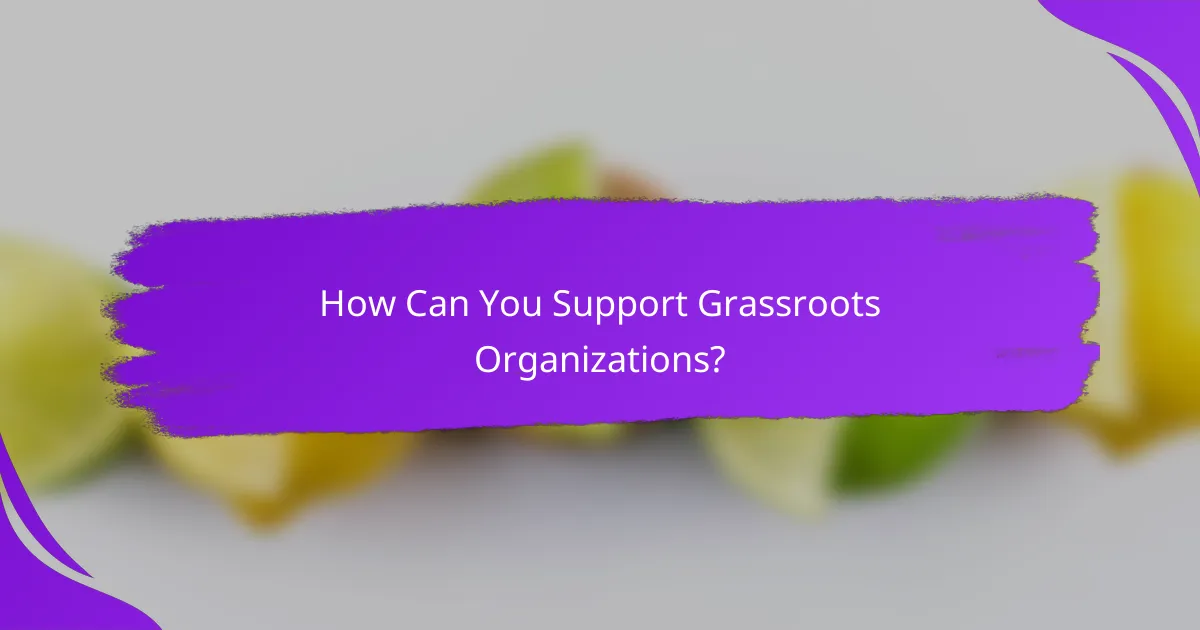
How Can You Support Grassroots Organizations?
Supporting grassroots organizations can significantly enhance their advocacy efforts and community impact. You can contribute through donations, volunteering, or forming partnerships that align with their mission.
Donations and fundraising
Financial contributions are vital for grassroots organizations to sustain their programs and initiatives. Consider making a one-time donation or setting up a recurring contribution to provide ongoing support.
Many organizations also host fundraising events, such as charity runs or auctions. Participating in these events not only raises funds but also increases awareness of their cause.
Volunteer opportunities
Volunteering your time is a powerful way to support grassroots organizations. Many groups rely on volunteers for various tasks, from administrative work to community outreach.
Check local organizations for specific volunteer needs. Some may require skills like event planning or social media management, while others may need hands-on help with projects or events.
Partnerships and collaborations
Forming partnerships with grassroots organizations can amplify their impact and broaden your reach. Businesses, schools, and other nonprofits can collaborate on projects that align with shared goals.
When considering a partnership, assess how your resources can complement their efforts. This could involve co-hosting events, sharing expertise, or providing in-kind donations like materials or services.

What Are the Key Characteristics of Successful Grassroots Organizations?
Successful grassroots organizations typically exhibit strong leadership, effective communication, and inclusive practices. These characteristics enable them to mobilize community support, advocate for change, and create a lasting impact.
Strong leadership
Strong leadership is crucial for grassroots organizations as it provides direction and inspires commitment among members. Leaders should be passionate, knowledgeable, and capable of rallying support from the community.
Effective leaders often engage in regular training and mentorship to enhance their skills. They should also be approachable, fostering an environment where team members feel valued and empowered to contribute ideas and solutions.
Effective communication
Effective communication ensures that all stakeholders are informed and engaged. Grassroots organizations should utilize various channels, such as social media, newsletters, and community meetings, to disseminate information and gather feedback.
Clear messaging is essential; organizations should focus on concise, relatable content that resonates with their audience. Regular updates and open dialogues can help maintain transparency and build trust within the community.
Inclusive practices
Inclusive practices are vital for grassroots organizations to reflect the diversity of the communities they serve. This involves actively seeking input from underrepresented groups and ensuring that all voices are heard in decision-making processes.
Organizations can implement strategies like outreach programs and community forums to engage a broader audience. Additionally, fostering an inclusive culture can enhance collaboration and innovation, ultimately leading to more effective advocacy efforts.
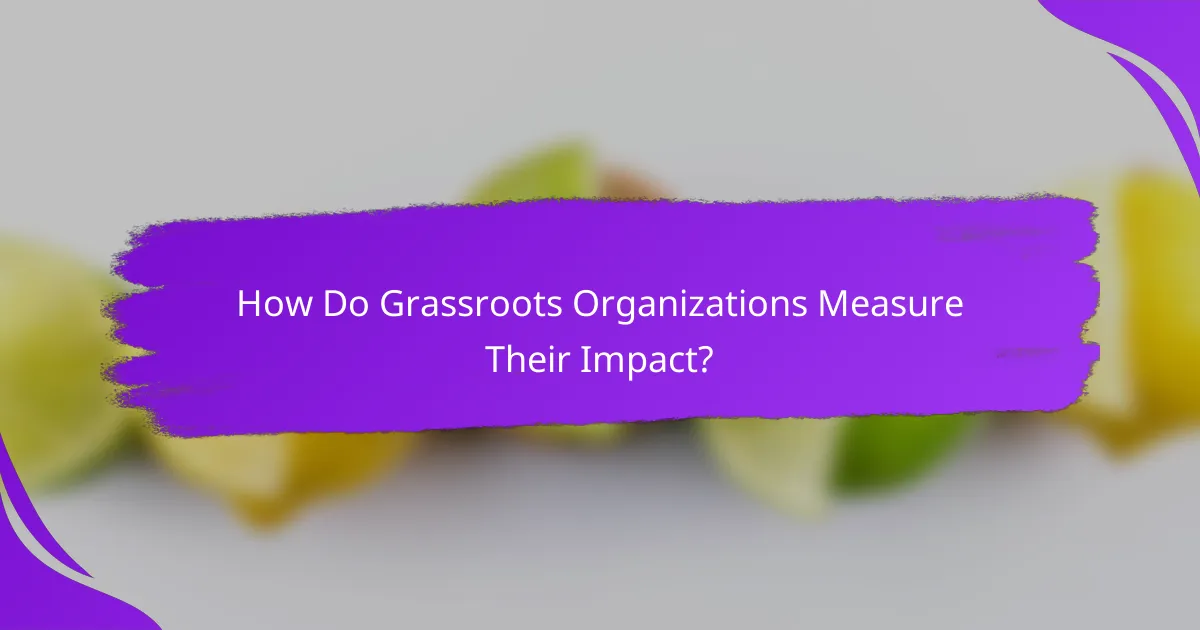
How Do Grassroots Organizations Measure Their Impact?
Grassroots organizations measure their impact through a combination of quantitative metrics, qualitative assessments, and community feedback. These methods provide a comprehensive view of their effectiveness and the changes they foster within communities.
Quantitative metrics
Quantitative metrics involve numerical data that can be easily measured and analyzed. Common examples include the number of individuals served, funds raised, or events held. These figures can help organizations track progress over time and demonstrate their reach to stakeholders.
For instance, a grassroots organization might report that it provided services to 500 families in a year or raised $50,000 for community projects. Such metrics are often used in grant applications and impact reports to showcase success.
Qualitative assessments
Qualitative assessments focus on the experiences and perceptions of individuals involved in or affected by the organization’s work. This can include interviews, surveys, and case studies that provide deeper insights into the community’s needs and the effectiveness of the organization’s initiatives.
For example, an organization may conduct interviews with participants to gather stories about how its programs have changed lives. These narratives can highlight the emotional and social impact that numbers alone may not convey.
Community feedback
Community feedback is essential for understanding the real-world impact of grassroots initiatives. Organizations often solicit input through surveys, focus groups, or public forums to gauge community satisfaction and gather suggestions for improvement.
Engaging the community in this way not only helps organizations refine their programs but also fosters a sense of ownership among community members. For instance, feedback might reveal that a particular service is highly valued, prompting the organization to allocate more resources to it.
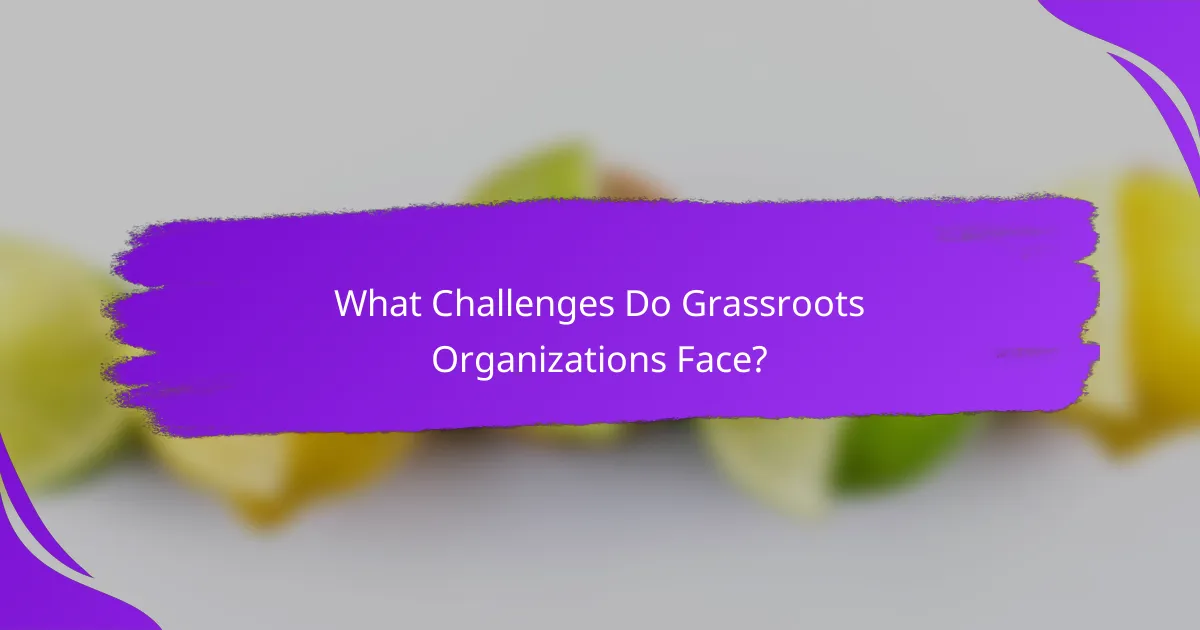
What Challenges Do Grassroots Organizations Face?
Grassroots organizations often encounter significant challenges that can hinder their effectiveness and sustainability. Key issues include funding limitations, community engagement difficulties, and navigating regulatory environments.
Funding limitations
Funding limitations are a primary challenge for grassroots organizations, impacting their ability to operate and expand. Many rely on small donations, grants, or local fundraising efforts, which can fluctuate significantly and may not cover essential operational costs.
Organizations often face competition for limited grant opportunities, and the application process can be time-consuming and complex. A lack of financial resources can restrict program development, outreach efforts, and staff hiring, ultimately affecting the organization’s impact.
To mitigate funding challenges, grassroots organizations should diversify their funding sources. This can include exploring partnerships with local businesses, applying for multiple grants, and engaging in community fundraising events. Establishing a strong online presence can also help attract donations through crowdfunding platforms.


